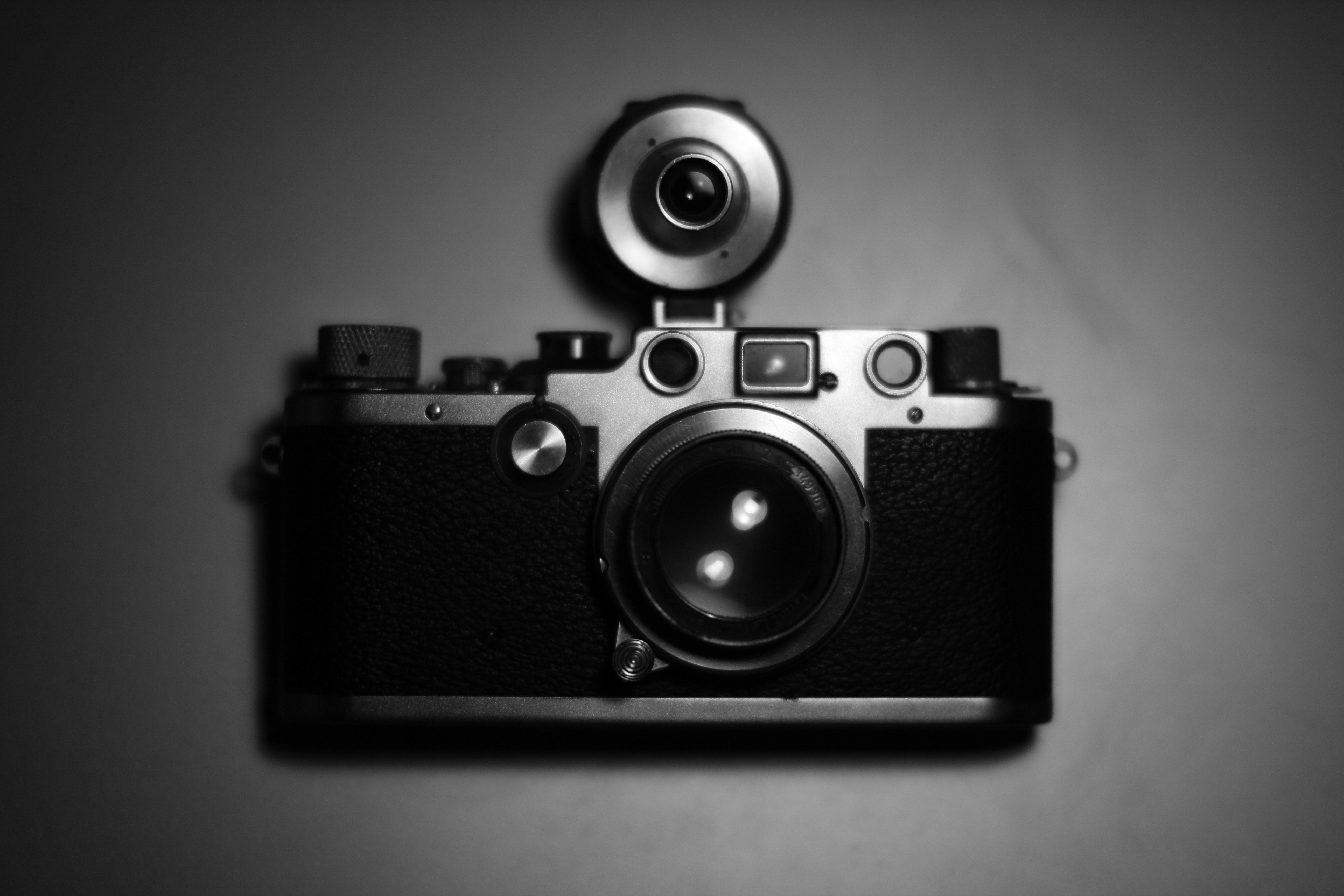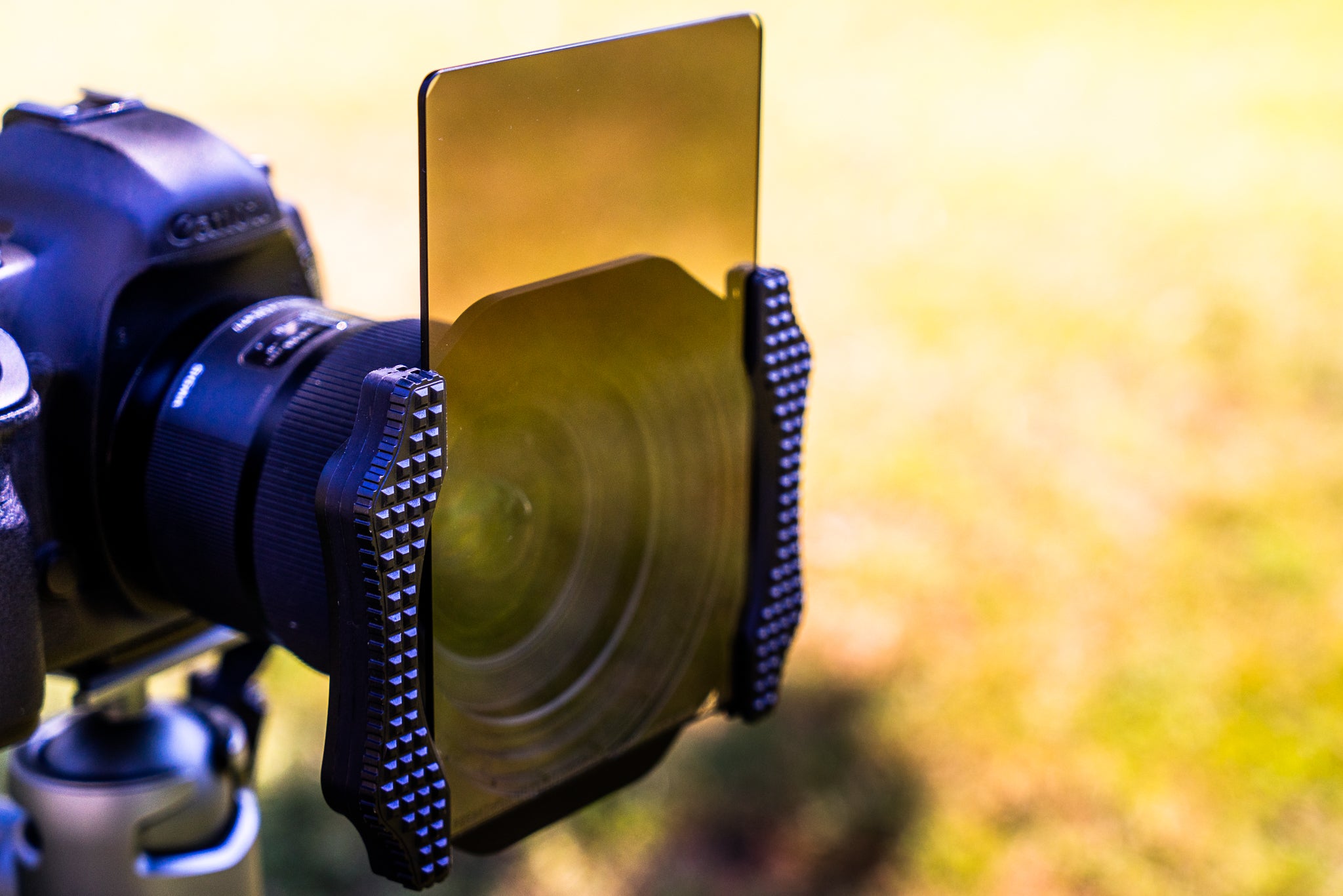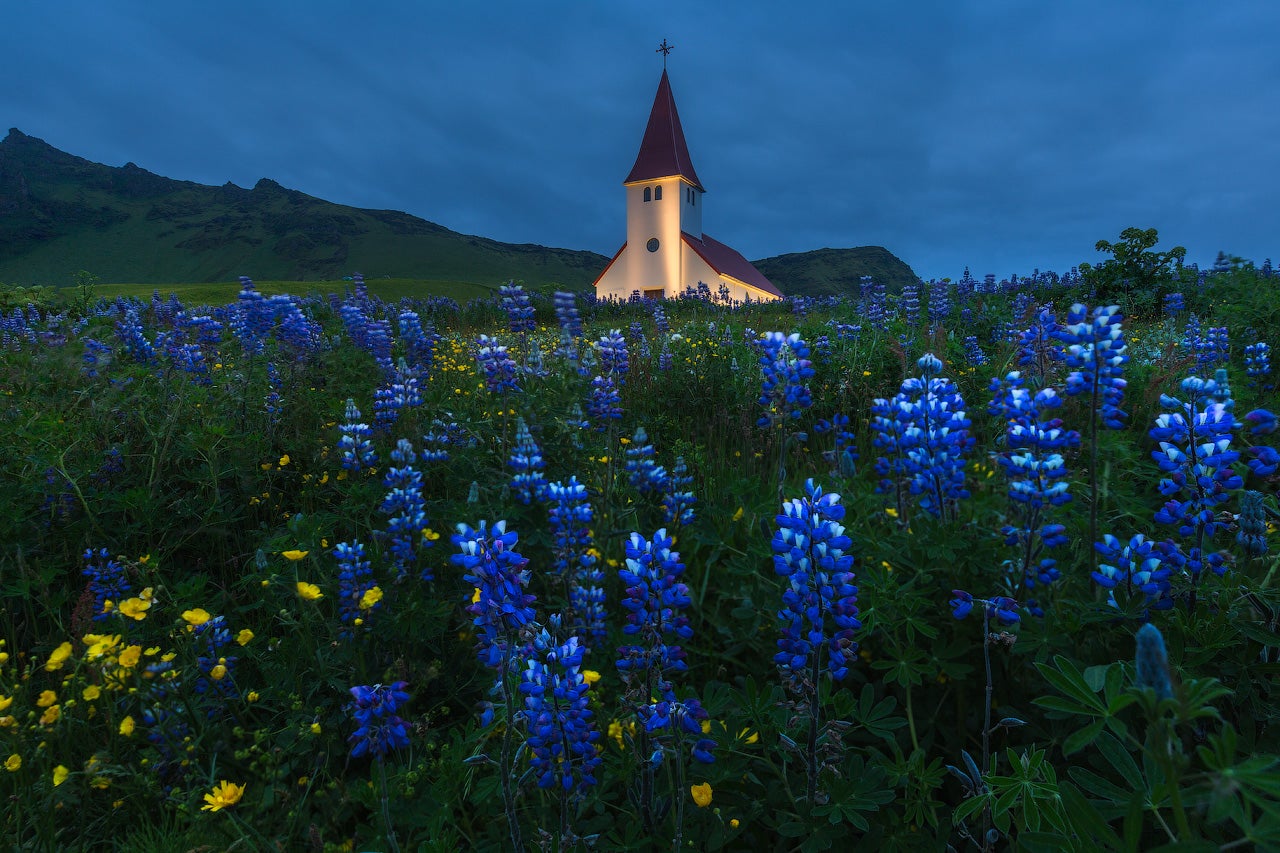
I believe it was Sir Arthur C. Clarke who proclaimed with his Third Law that “Any advanced technology is indistinguishable from magic.” Now, you might be thinking that you’ve maybe stumbled across the wrong article but I can assure you that you’re in the right place. We are, in fact, about to discuss everything you need to know to understand a DSLR camera. At the same time, keep that line from Sir Clarke in your mind because it speaks volumes as to how some photographers have grown to approach the photographic miracle that is today's modern DSLR camera.
- Check out this Namibia Wildlife Photography Tour
- Find out about The DSLR Accessories Every Photographer Needs
- Discover how Film is Not Dead: Where to Buy Film Online
It’s quite easy for us to forget how incredibly fortunate we are as photographers to enjoy the convenience of digital photography. It truly is “magic” compared to the tools which our camera-toting ancestors once employed. Today, a DSLR camera isn’t viewed as anything miraculous and in some circles, DSLR cameras are looked upon as old news. Perhaps we are forgetting that even the most basic of DSLR cameras are truly extraordinary.
Today, we’re going to examine what a DSLR camera actually is and how it works to produce a photograph. We’ll discuss what all those letters stand for and talk about what makes a DSLR different from some other types of cameras. I promise not to bring anymore metaphysical or philosophical parallels into the conversation.
Well, probably.
- See also: A Brief History of Photography
What is a DSLR Camera?
First things first; what exactly is a DSLR? To get started, those letters in the DSLR abbreviation stand for 'Digital Single Lens Reflex'. This might sound a bit complicated but it’s truly not. In fact, as far as camera systems go, the single lens reflex system imaging is relatively straightforward; brilliant, yes... but straightforward. It all comes down to a clever system of mirrors and prisms.
 A digital single lens reflex camera. Photo by: 'Adam Welch'.
A digital single lens reflex camera. Photo by: 'Adam Welch'.
When we refer to single lens reflex, all we’re really talking about is how the camera goes about allowing the user to compose a photo using the same incoming light source that will be used to physically make the photo. This might sound fairly easy to do but it’s actually quite a large engineering hurdle to overcome. The problem lies in figuring out how to accurately frame the shot through the viewfinder while still being able to position the image receptor (film or digital) perpendicular to the rear of the lens. There’s also another catch and that is the matter of making sure the image we see through the viewfinder is oriented correctly to our eyes.
All of this goes back to those mirrors and prisms we mentioned earlier. In my opinion, this is the real “magic” of a DSLR camera.
Composing the Shot
A DSLR camera allows us to physically look through our lens and compose the scene accurately. We more or less see what the camera is seeing. However, as we’ve already hinted at, this is much easier said than done. Not only that but due to principles of optics that we thankfully don’t need to go into here, the image must also be flipped so that it is orientated correctly and not like this image from the ground glass (focusing screen) of a large format camera:
 Without the prism and mirror system of the DSLR viewfinder we would be dealing with this. Photo by: 'Adam Welch'.
Without the prism and mirror system of the DSLR viewfinder we would be dealing with this. Photo by: 'Adam Welch'.
The image you see while composing a shot through the viewfinder of a DSLR is the result of the following actions:
-
Light enters the camera through the lens.
-
The light bounces upwards off the reflex mirror (more on this later).
-
This reflected light strikes the focusing screen/condenser, making it visible to our eyes.
-
This projected image from the focusing screen is vertically and horizontally flipped as it enters the pentaprism / pentamirror.
-
We then view the corrected image through the viewfinder located on the back of the camera.
Below, I’ve traced the passage of the light using this handy cutaway diagram of an Olympus E-30 DSLR I found on Wikipedia.
 The passage of light in a DSLR camera. Photo by: 'Hanabi123, Wikimedia Commons'.
The passage of light in a DSLR camera. Photo by: 'Hanabi123, Wikimedia Commons'.
How cool is that? I mean, did you realise before all that was going on when you looked through the viewfinder of your DSLR? Keep in mind that these steps only apply when we use the optical viewfinder. Composing using your LCD screen operates directly from the light striking the digital sensor of the DSLR.
- See also: The Best Tripods for Photography in 2020
Making the Photo
Back in step #2 of the viewfinder section, we mentioned the reflex mirror of the DSLR. This is the key component that puts the “reflex” in digital single lens reflex. Without this mirror, we would neither be able to compose nor expose our photos.
 Just look at that little mirror. Fragile, tiny, and yet so incredibly important. Photo by: 'Adam Welch'.
Just look at that little mirror. Fragile, tiny, and yet so incredibly important. Photo by: 'Adam Welch'.
We’ve already learned that the light entering the camera bounces up from the reflex mirror and into the pentaprism or pentamirror. This means that the reflex mirror itself blocks the image sensor. In order to make a photo, the reflex mirror flips up out of the way the instant the shutter button is depressed. It’s this flipping up of the reflex mirror which causes the “slap” sound found on many DSLR cameras and why the viewfinder goes black during the exposure.
The vibration caused by mirror slap in a DSLR can be problematic especially for long exposures. That’s why many DSLR cameras feature the “mirror lock-up” function which we’ve already talked about in our Ultimate Guide to Long Exposure. The reflex mirror will also automatically flip up out of the way when composing using the LCD screen.
What is the Difference Between DSLR and SLR Cameras?
Up until this point, we’ve covered the basic inner workings of DSLR cameras yet conspicuously managed to avoid a very obvious question: what’s the difference between a DSLR and an SLR?
 DSLR next to a couple of SLR cameras. Photo by: 'Adam Welch'.
DSLR next to a couple of SLR cameras. Photo by: 'Adam Welch'.
The laughably short answer to this question is, of course, that a DSLR uses a digital sensor to capture images and an SLR uses a non-digital substrate for the same purpose (usually photographic film). Now, I understand that the chances are you didn’t need me to tell you this. After all, the “D” in DSLR stands for “digital”. However, there are a couple other things worth mentioning when we talk about the differences between these two types of cameras.
DSLR vs SLR
The important thing to remember when comparing DSLR and SLR cameras is that the basic mechanism for the shutter and optical viewfinder remains virtually the same. There is still a reflex mirror which reflects the light entering the camera up to the viewfinder and this mirror must still move out of the way at the time of exposure.
 On the left, the battery compartment of my trusty Nikon F3 SLR. Compared to that of the Canon 5D MK3 on the right. Photo by: 'Adam Welch'.
On the left, the battery compartment of my trusty Nikon F3 SLR. Compared to that of the Canon 5D MK3 on the right. Photo by: 'Adam Welch'.
Aside from the image sensor, the main difference found in a DSLR when compared to an SLR is the former's relatively massive image processing electronics (CPU), which takes up a lot of real estate inside the camera body. Not only that but additional hardware is also required for the LCD screen. Furthermore, seeing as virtually all modern DSLR cameras now shoot video, there also must be room for the microphone and speaker. To top it all off, the increased power demands of these functionalities means that DSLR batteries are significantly larger than those required for their non-digital cousins.
Is My Camera a DSLR or SLR?
Visually, SLR and DSLR cameras can look quite similar at first glance, so it’s not surprising that it can be difficult at times to tell them apart. However, seeing as the greatest difference between the two is that one is a digital camera and the other is not, we can easily tell them apart just by looking closer at the camera body.
Most SLR cameras will use film, which means there will be some sort of film rewind button located somewhere on the camera.
 Film rewind and back release switch on an SLR camera. Photo by: 'Adam Welch'.
Film rewind and back release switch on an SLR camera. Photo by: 'Adam Welch'.
Older SLR cameras are much easier to identify as being non-digital due to their obvious film advance levers and reminding crank.
 An older SLR camera is much easier to identify. Photo by: 'Adam Welch'.
An older SLR camera is much easier to identify. Photo by: 'Adam Welch'.
And of course, the most surefire method of determining if your camera is a DSLR or SLR is by searching for the film compartment. Naturally, if you’re able to load film into the camera, it is not a DSLR.
 If you can load film into it, then it is not a DSLR camera. Photo by: 'Adam Welch'.
If you can load film into it, then it is not a DSLR camera. Photo by: 'Adam Welch'.
That being said, not all SLR or DSLR cameras that you encounter will be in full-frame digital or 35mm film format. There are many medium format film and digital cameras which use the SLR type of imaging system. Take my Bronica GS-1 for example, which is a 6x7 medium format film SLR. The reflex system remains virtually the same as with any other SLR or DSLR... only scaled up in size.
 A Bronica GS-1 is a 6x7 medium format film SLR. Photo by: 'Adam Welch'.
A Bronica GS-1 is a 6x7 medium format film SLR. Photo by: 'Adam Welch'.
Medium format SLR cameras are less common but in most cases, you can still use the guidelines from above to determine if the camera in question is an SLR or DSLR.
What Do You Mean by Mirrorless???
Since Sony introduced their A7 series of full-frame mirrorless cameras around 2013, the schism of the photography world has been decidedly split. Some people prefer DSLR cameras while some insist that mirrorless cameras are the inevitable wave of the future.
If you haven’t guessed already, I’m not about to even come close to commenting on that debate. Still, given that we are discussing DSLR cameras it stands to reason that we should briefly visit the difference between these cameras and those which are “mirrorless”. Again, you’ve probably already guessed the biggest difference….
 Inside a mirrorless camera. Photo by: 'Adam Welch'.
Inside a mirrorless camera. Photo by: 'Adam Welch'.
Yep, no mirror! As the name suggests, mirrorless digital cameras lack a reflex mirror. That means that they rely on electronic viewfinders (EVF) and the rear LCD screen when it comes to composing photos. Think of this as a full-time Live View mode. The user still views the scene as it is perceived through the front of the lens but without the mirror and prism system found in DSLR cameras.
This mirrorless design has some pros and cons when compared to DSLR cameras – the most notable benefit being that mirrorless cameras are physically smaller than most DSLR cameras as there is no mirror box and prism assembly. Mirrorless cameras also can be more readily used with vintage lenses, as well as those which sport differing lens mounts (with the correct adapter), due to their relatively short flange focal distances.
One of the downsides compared to DSLR cameras is that when composing shots, mirrorless cameras rely so heavily on the digital sensor, EVF and LCD that the battery life is much shorter. Another drawback of mirrorless cameras is that dedicated mirrorless lenses are generally more expensive than those for DSLR cameras. However, this is slowly becoming less of an issue as more and more after-market lens makers are beginning to produce more and more lenses for these types of cameras.
DSLR Cameras: Final Thoughts
We began our journey into learning about DSLR cameras by considering how our modern world of photography can at times make us forget how amazing our cameras truly are. So often, we run into photographers who furiously debate the benefits of DSLR vs mirrorless cameras or feverish arguments over who makes the best DSLR camera. While these can be completely healthy discussions, we shouldn’t forget that our cameras are only tools that make it possible for us to create photographs.
 Our cameras are creative tools. Photo by: 'Adam Welch'.
Our cameras are creative tools. Photo by: 'Adam Welch'.
If you happen to be in the market for a good DSLR camera for beginners, then hopefully the information we’ve laid out here will help you to make more informed decisions before you buy. Or, perhaps you’ve always been curious about what makes your own DSLR tick and if that’s the case, then I hope you’ve found this article particularly enlightening.
So if you happen to be a DSLR user, the next time you find yourself out shooting or in the studio, remember just how incredible that camera your hold in your hands truly is and that each frame is a little piece of magic.
About the author: Adam Welch is an adventurer, photographer and author based in the USA. You can find more of his work on his website or by following him on Facebook and YouTube.
Do you prefer SLR or DSLR cameras? What kind of camera do you use for your own photography? Share your thoughts by leaving a comment below!











